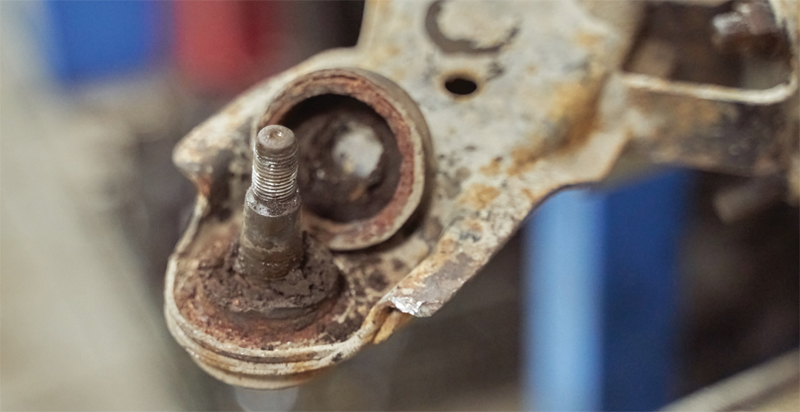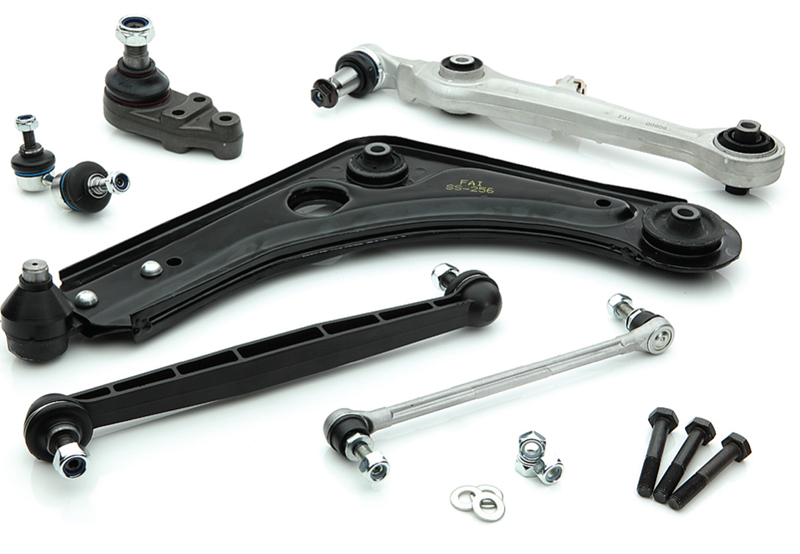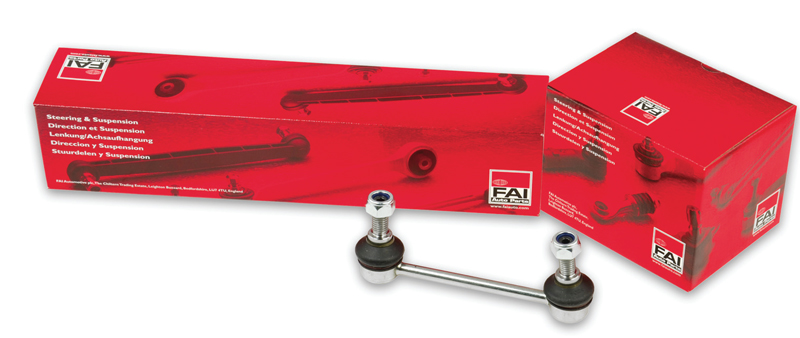
With MOT season upon us, we have asked FAI to share its knowledge and experience on a safety-critical area of the test. With over 20 years’ experience in supplying the aftermarket with steering and suspension components, the firm has grown from an initial offering of just a few hundred numbers to over 6,000 parts today.
Steering and suspension account for 21% of MOT failures. 50% of which could have been prevented if drivers undertook regular checks on their vehicles. Around 35% of vehicles fail their MOT on the first attempt with that figure reducing to a final fail rate of 25%.
From April to September 2019, over 15.7 million vehicles had an MOT with over 3.9 million having a final failure on their MOT.
In this period, steering and suspension was the second-highest overall cause for failure, being a safety-critical category there is no consideration for not getting the parts replaced if there is any concern.
Causes of failure are often down to the poor condition of UK roads that are littered with potholes, inadequate repairs and our love-hate relationship with traffic calming. Driving over speed humps too quickly is something that most vehicle owners are guilty of, yet most don’t realise the array of issues this can cause – that is, until they take their car for its MOT. This constant strain placed on the car’s steering and suspension affects the life of ball joints, bushes, and wheel bearings. Weather conditions also massively affect the degradation of all metal and rubber components, the latter of which often disguise the issue lurking beneath.

Types of issues:
- Wishbone failure on the ball joint or bushes
- Rubber boot split or failed and salt, dirt and water from the road have started to corrode the ball pin
- Strut Mount and/or bearing failure resulting in a harder ride
- Link rod or anti-roll bar bush failure can affect the steering of and notice the vehicle rolls more on corners
Types of failures to look out for that can occur leading to MOT failure include:
- Vehicle pulling to one side when driving
- Speed bumps and potholes feel harder when driving
- Difficulty when turning the steering wheel/poor handling, vehicle does not respond correctly to steering wheel movement
- Excessive play in steering wheel/vibrations from the steering wheel
- General knocking sound when driving

Bad practices
It is all too common for parts to not be replaced in pairs. This is highly recommended by FAI as it is not always straightforward to see wear and tear on the insides of rubber boots or the inside of bushes or any bolts which are used to fit wishbones. The concern here is that if one part has failed, it is likely the other side could fail around a similar time as each part has an expected lifetime. Bushes and ball joints and ball pins on rack ends and tie rod ends will also wear over time and replacing only one side means the bushes and ball pins are less worn on one side more than the other, allowing the possibility of a change in steering or control of the vehicle and possible failure on other steering and suspension parts.
Alignment after fitting steering and suspension parts is a crucial practice once steering and suspension parts have been replaced as avoiding this would lead to unnecessary wear and tear on steering, suspension, wheel bearings, tyres and brakes.

Safety issues
It is well known that steering and suspension parts are safety-critical. Any shortcuts taken or mistakes made with fitment or assessment of the vehicle can lead to unpleasant outcomes for the vehicle, the driver and others on the road. Some parts in the aftermarket are not met to specification and often shortcuts are taken on materials causing them to have up to 30% less of the correct material and not hold the relevant weight that is required to meet OE spec.
To ensure FAI maintains its high quality in production, we work closely with our factories to educate ourselves on the testing our products go through and to keep on top of any new testing methods or machines which are introduced by our factories. Currently, our suppliers have six different laboratories which cover testing methods such as link rod vibration and pull-out tests, ball pin strength tests, salt spray tests and many more.
One of the most important methods our products go through is cataphoretic coating, which is a high-tech paint coating where paint is attracted to the metal through charged paint particles, ensuring complete coverage compared to a spraying process.
This increases the longevity of each part as it provides better protection from the chemicals and dirt which spray onto steering and suspension parts from current road conditions.









